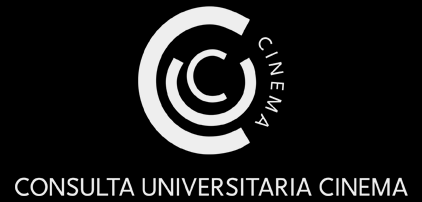So far, the 21st century could be labelled as the century of uprisings. As difficult as it is to historicize a multifaceted phenomenon that looks rather elusive and constantly changing, one cannot underestimate the ground-breaking role played by events such as the anti-WGO demonstrations in Seattle (1999) and Genoa (2001) in informing the new millennium’s imagination. In 2011, the so-called Arab Springs and the 15-M Movement in Madrid also made blatantly evident that this new wave of revolts is strictly connected to the latest development in the media ecosystem (Hartle and White 2021), showing the mutual bind between technical (re)producibility and the effectiveness (or even the possibility) of political action (Rovisco 2017; Snowdon 2020). Nowadays, mass uprisings are still one of the most representative phenomena within the global political scenario (Clover 2016), from the United States to the Middle East and to Taiwan. In turn, throughout these decades such uprisings have produced an increasing volume of audiovisual documentation which is spread all over the world in real time, enabling new professionalisms to emerge (Ristovska 2021) and creating layered ecologies in the media/movement dynamic (Trerè 2019).
Indeed, the last two decades have witnessed the emergence and gathering in the public space of several collective movements which have highlighted – in a more or less violent way – the contradictions of the present from social, political, economic, and ecological points of view (Amato 2019). Despite their heterogeneous claims, a key feature shared by these movements is the effort to refunctionalize media beyond their original aim and scope (Anden-Papadopoulos 2013). This includes the sphere of video production as a constitutive part of the acts of revolt (Della Ratta 2018). The continuous dialectic between the actions performed by the “singular-plural” body (Nancy 1996) and their audiovisual remediation (Mirzoeff 2017) seems to disclose a potentiality that is both political and aesthetic. Its features and consequences have only recently begun to be explored by media and visual culture studies (Askanius 2014; Razsa 2014; Eder, Hartmann, Tedjasukmana 2020; McGarry et al. 2020).
From this perspective, addressing uprisings demands a multifocal point of view. One the one hand, it requires the capability of considering the specificity of the revolts as they are situated in a certain historical and geographical context: the case of Gezi Park in Turkey is emblematic, but it would also be possible to refer to the site-specifity of uprisings on a larger scale, reflecting for instance on a Mediterranean way in the elaboration of strategies, topics and acts. On the other hand, it is necessary to identify the features of the different audiovisual practices shared by participants all over the world: for instance, carrying moving images (like eyewitness videos) of the victims of violence and of streets protests, a practice linking the Black Lives Matter movement and Middle eastern protesters. This also includes different types of moving images getting increasingly influential in current political conflicts and protests, such as web-documentaries or mobilizing informative videos, as well as user generated content produced by individual activist users like mash-up videos or video-selfies on TikTok (cf. Eder/Tedjasukmana 2020; Fahlenbrach 2020).
This multifocality is not limited to synchronic aspects, but it also involves the diachronic dimension. In fact, such a gaze should constantly adhere to the present but nevertheless be able to establish relationships with the past. This means that it needs to investigate with an archaeological approach those phenomena and circumstances which seem to predict questions that have become inescapable today, such as the role of female agency in the case of the Mothers of Plaza de Mayo, the construction of a police gaze in response to the riots of 1968 in Paris (Scheppe 2021), or the “reinvention of the audiovisual beyond the cinema as a technological mechanism and ideological institution” occurred in the 1970s (Goddard 2018, 193). Didi-Huberman (2016, 2019, 2021) has recently shown the productivity of this approach, which aims to revisit key moments in the history of images by looking for those moments of tension that have somehow anticipated the contemporary ways of contesting the political.
This special issue intends to promote a transdisciplinary reflection on the role that moving images and video technologies play within uprisings. In fact, still images and pictures have been the object of several inquiries, whereas audiovisual media have been less investigated. Thus, this issue is fostering further analyses that highlight the specific features and mechanism of audiovisual making meaning in political protest. We particularly encourage transdisciplinary researches that can put into dialogue media and visual studies with different approaches (e.g. queer and postcolonial studies). Possible topics include, but are not limited to:
- Specific case studies of the role of moving images in the context of contemporary uprisings;
- Themes and aesthetics: are there distinctive audiovisual features characterizing uprisings according to their core theme? What aesthetic conventions have developed in the mediation of specific protest themes?
- How do current social-media-technologies and environments influence the aesthetics and impacts of contesting moving images?
- How do uprisings affect the present-day media ecology?
- History of moving images in revolt: how did past uprisings anticipate contemporary audiovisual practices?
- How can videos of uprisings be understood within and beyond the paradigm of witnessing? How are these videos narrated and re-appropriated in the contemporary mediasphere?
- How can we archive, preserve, and disseminate the memory of uprisings in the digital scenario? What specific role do traditions of cinema, visual arts, and contemporary media play in this context?
- Revolts against images: iconoclasm and iconoclash (Latour and Weibel 2002) as audiovisual tactics in contemporary uprisings
Please send your abstract (from 300 to 500 words, in English or French) and a short biographical note to kathrin.fahlenbrach@uni-hamburg.de, giuseppe.previtali@unibg.it, and giacomo.tagliani@unipa.it by August 31st, 2023.
Authors will be notified of abstract proposal acceptance by September 30th, 2023.
If the proposal is accepted, the author(s) will be asked to submit the full article (in English or French) by December 15th, 2023.
All article submissions should include: 5 keywords, name of author(s), institutional affiliation, contacts details and a short bio for each author.
The articles must not exceed 5.000/6.000-words.
Submission of a paper will be taken to imply that it is unpublished and is not being considered for publication elsewhere.
Contributions will be submitted to double blind peer review.
The issue no. 42 of Cinéma & Cie will be published in June 2024.
Call for Papers





